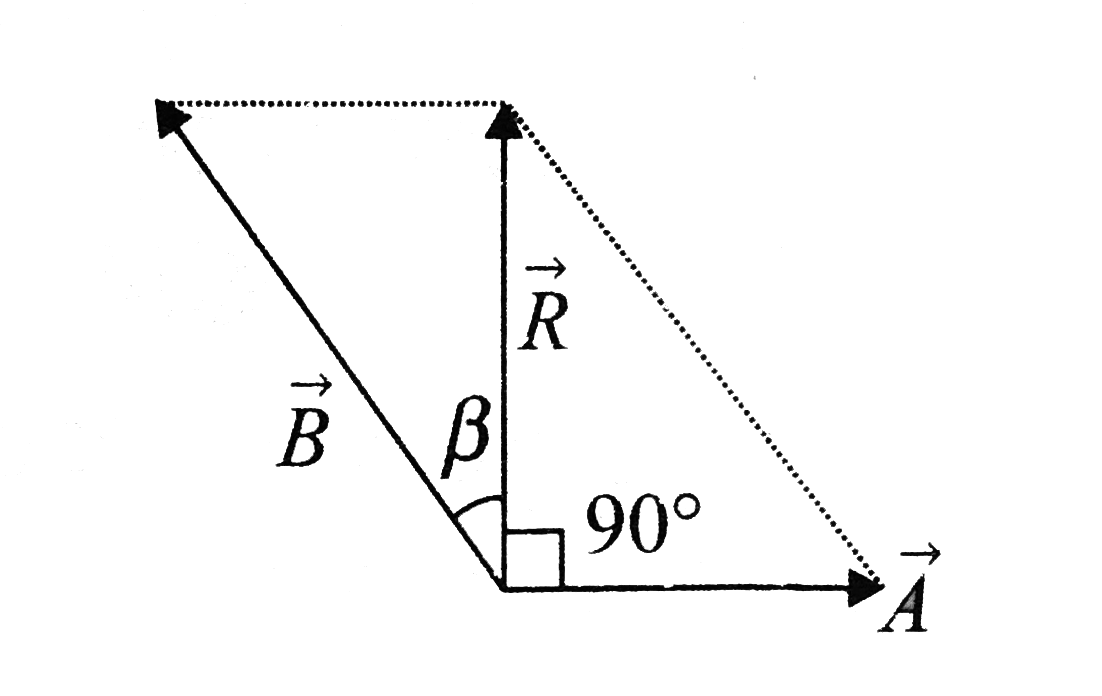A charged particle with charge q enters a region of constant, uniform and mututally orthogonal fields →Eand→B with a velocity →v perpendicular to both →Eand→B, and comes out without any change in magnitude or direction of →v. Then
→v=→B×→E/E2
→v=→E×→B/B2
→v=→B×→E/B2
→v=→E×→B/E2
The correct Answer is:B
To solve the problem, we need to analyze the motion of a charged particle in the presence of electric and magnetic fields. We are given that the particle enters a region where both fields are mutually orthogonal and that its velocity is perpendicular to both fields. The particle exits this region without any change in the magnitude or direction of its velocity.
1. Understanding Forces on the Charged Particle:
- When a charged particle with charge q moves in an electric field →E and a magnetic field →B, it experiences two forces:
- The electric force →FE=q→E
- The magnetic force →FB=q→v×→B
2. Condition for No Change in Velocity:
- For the particle to exit the region without any change in the magnitude or direction of its velocity, the net force acting on it must be zero:
→FE+→FB=0
- This implies:
q→E+q(→v×→B)=0
- Dividing through by q (assuming q≠0):
→E+(→v×→B)=0
- Rearranging gives:
→E=−(→v×→B)
3. Magnitude of Forces:
- The magnitudes of the forces must be equal:
|→E|=|→v×→B|
- The magnitude of the magnetic force can be expressed as:
|→v×→B|=vBsin(θ)
- Since →v is perpendicular to →B, sin(θ)=1:
|→v×→B|=vB
4. Equating Forces:
- From the earlier relationship, we have:
|→E|=vB
5. Finding the Velocity Relation:
- Rearranging the equation gives us:
v=EB
- This shows that the velocity v of the particle is directly proportional to the electric field E and inversely proportional to the magnetic field B.
Conclusion:
The relationship derived indicates that for the charged particle to maintain its velocity while traversing through the fields, the velocity must satisfy the equation:
v=EB
- When a charged particle with charge q moves in an electric field →E and a magnetic field →B, it experiences two forces:
- The electric force →FE=q→E
- The magnetic force →FB=q→v×→B
- For the particle to exit the region without any change in the magnitude or direction of its velocity, the net force acting on it must be zero:
→FE+→FB=0
- This implies:
q→E+q(→v×→B)=0
- Dividing through by q (assuming q≠0):
→E+(→v×→B)=0
- Rearranging gives:
→E=−(→v×→B)
- The magnitudes of the forces must be equal:
|→E|=|→v×→B|
- The magnitude of the magnetic force can be expressed as:
|→v×→B|=vBsin(θ)
- Since →v is perpendicular to →B, sin(θ)=1:
|→v×→B|=vB
- From the earlier relationship, we have:
|→E|=vB
- Rearranging the equation gives us:
v=EB
- This shows that the velocity v of the particle is directly proportional to the electric field E and inversely proportional to the magnetic field B.
The relationship derived indicates that for the charged particle to maintain its velocity while traversing through the fields, the velocity must satisfy the equation:
v=EB
Topper's Solved these Questions
- MOVING CHARGES AND MAGNETISM Book:NCERT FINGERTPS ENGLISHChapter:MOVING CHARGES AND MAGNETISM Exercise:HOTS
Explore 5 Videos
- MOVING CHARGES AND MAGNETISM Book:NCERT FINGERTPS ENGLISHChapter:MOVING CHARGES AND MAGNETISM Exercise:EXEMPLAR PROBLEMS
Explore 6 Videos
- MAGNETISM AND MATTER Book:NCERT FINGERTPS ENGLISHChapter:MAGNETISM AND MATTER Exercise:NCERT Exemplar
Explore 5 Videos
- NUCLEIBook:NCERT FINGERTPS ENGLISHChapter:NUCLEIExercise:Assertion And Reason
Explore 15 Videos
Similar Questions
If →A is perpendicular to →B, then
View SolutionIf →v1+→v2 is perpendicular to →v1−→v2, then
View SolutionIf →c is perpendicular to both →a and →b , then prove that it is perpendicular to both →a+→b and →a -→b .
View SolutionIf →c is perpendicular to both →a and →b, then prove that it is perpendicular to both →a+→b and →a−→b.
View SolutionThe resultant of two vectors →A and →B is perpendicular to the vector →A and its magnitudes is equal to half of the magnitudes of vector →B (figure). The angle between →A and →B is

View SolutionA charged particle goes undeflected in a region containing electric and magnetic field. It is possible that
(i) →E∣∣∣∣→B.→v∣∣∣∣→E
(ii) →E is not parallel to →B
(iii) →v∣∣→B but →E is not parallel to →B
(iv) →E∣∣→B but →v is not parallel to →E
View SolutionGiven that →A+→B=→C and that →C is perpendicular to →A Further if ∣∣→A∣∣=∣∣→C∣∣, then what is the angle between →A and →B
View SolutionIf →A,→B&→A+→B are three non− zero vector. Such that →A+→B is perpendicular to →B then which of one is correct :
View SolutionIf ∣∣→a+→b∣∣=∣∣→a−→b∣∣, then show that →aand→b are perpendicular to each other.
View SolutionWhat is the condition for magnitude of →A+→B to be equal to that of →A−→B ?
View Solution

